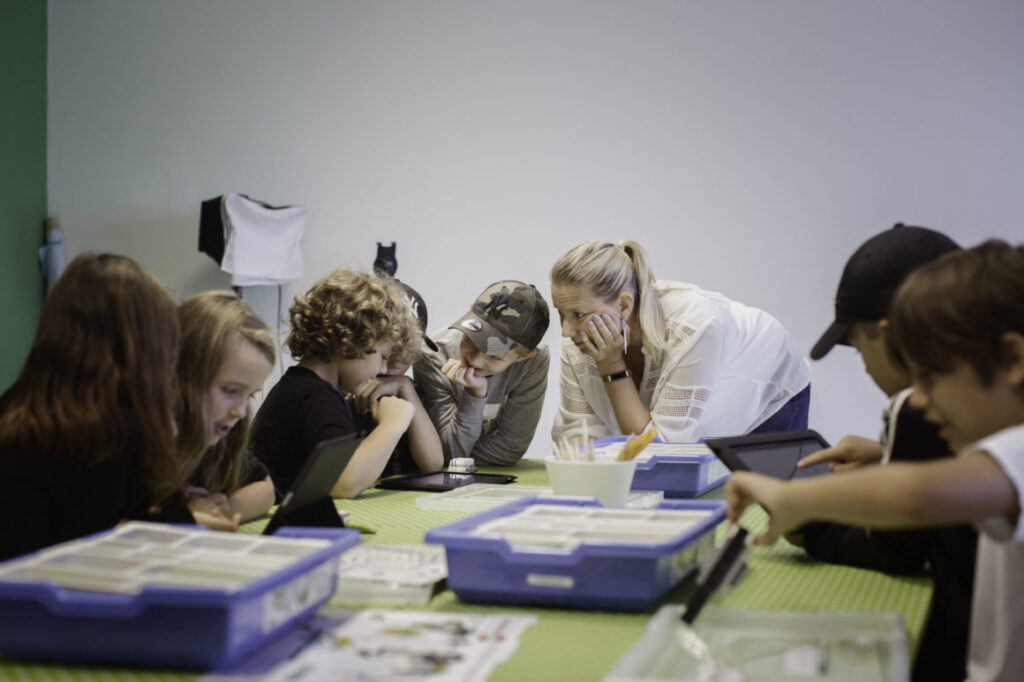
EARLY CHILDHOOD-PRESCHOOL
In Sweden, preschool is called Förskola or Dagis and is not compulsory but must be offered/available to parents. For kids from the ages of 1- 5.
ELEMENTARY EDUCATION
This stage is compulsory for children between the ages of 6-15.
The curriculum is unified for all schools and are required to take 16 compulsory subjects
SECONDARY EDUCATION
Secondary education is generally between 3-4 years and ages (16-20 ). It is not, however, compulsory. It is only mandatory from ages 6-15. There are specific criteria. For example, you must pass grade 9 and have an English, Swedish, and Mathematics certificate. The curriculum is unified for English, math, and Swedish, but the curriculum varies and is different in high schools depending on your field of studies. For example, if you want to study Music, you will go into a music high school, or if you’re going to study engineering or mechanics, you will go to an engineering or mechanic high school. In Sweden, high school is called a gymnasium. There are 18 different national programs with a distant educational focus. It is divided into two categories preparatory and vocational.
To attend high school you must have passed the core subjects, Math, English, and Swedish, and must take at least 2500 points worth of courses. They should give 8 out of 16 issues and get a certificate. An academic year consists of approximately 20 weeks and is for three years.
There are not many independent schools in Sweden. There are no strictly private schools since 1992, but there are semi-government-funded schools called independent schools.
STEAM EDUCATION
In Swedish high schools, the principles of STEAM are used. But again, some high schools will use more principals than others. Some specialized teachers are trained in STEAM education, but not all. Teachers interested in STEAM are offered a professional development model with a high level of experience to maintain a high standard of education. Teachers are informed.
The Swedish state required teachers to pass university examinations to demonstrate proficiency in academic studies to teach. It is considered and is offered as part of courses in universities. There are technical courses in high schools in Sweden, but again it depends on the high school. There are many practical and theoretical art programs taught in both primary and high school and only taught in universities if it is related to your course or program. For example, you have sewing, woodwork, drawing, etc
Science is taught in all schools in Sweden but are categorized as NO.
Engineering courses are offered in engineering high schools, colleges, and universities.
Math is one of the core subjects in Sweden, and students are encouraged to show how they arrive at an answer.
All teachers with a fair idea of STEAM appreciate its benefits.
UNIVERSITY LEVEL EDUCATION
There are about 50 universities and colleges in Sweden It usually lasts two to three years, depending on the degree. There is more weight given to degrees from universities than colleges. There is also more weight given to some universities as well.’, Most of the universities offer master degree’s.
Students from Sweden or a citizen of another EU country don’t pay. But the PhD students Depending on the program and research, are paid.
In general The system in Sweden is similar to the ECTS.
GENERAL EDUCATIONAL PROGRAM AND POLICY
The institution that creates the national educational program called Skolverket ( National Agency for Education). There are specific ways of transferring or converting, and there are requirements and a certain level in specific core subjects and subjects related to the field of study. It varies from program to program. For instance, an international student with a degree from a reputable university can continue his education in Sweden provided he passed all the core subjects with outstanding results (A or B). Schools can adapt the timetable to suit the families’ needs , for Förskola or Dagis but not for high schools and universities. All books and supplies are free for students in primary and secondary. Only in universities and colleges do you have to pay for your readers. But you can borrow from the library for free. There is free tuition and free books for primary and secondary students. Aside from that, they received a small amount from the state as upkeep.
There are special second-chance schools for students who have dropped out and wish to continue an older age.
There are special schools for persons to learn the Swedish language, and it is called SFI Swedish for Immigrants Most are Public, even the private, semi-funded by the government and must follow a similar curriculum. However, international schools have to follow the Swedish curriculum, offer classes, and follow other countries’ curriculum curricula.

